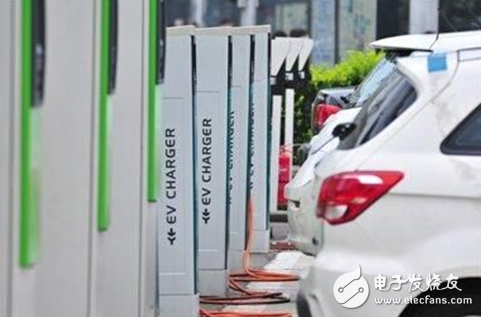New energy vehicles are revolutionizing the automotive industry. Not only are industry players paying close attention, but the government is also showing strong support. In response, the state has introduced policies to promote the development of new energy vehicles. So, what does this policy really mean?
The "Double Points Management Method" for the average fuel consumption of passenger vehicle enterprises and new energy vehicles will officially take effect on April 1, 2018. Compared to the previous draft, some adjustments have been made. The new energy vehicle points will be counted starting from 2019, with a target of 10% in 2019 and 12% in 2020.

**New energy points are extended for one year**
Before the official launch of the "double points" policy, the Ministry of Industry and Information Technology issued two consultation drafts in September last year and June this year. These drafts set the required proportion of new energy vehicles for 2018, 2019, and 2020 at 8%, 10%, and 12%, respectively.
After the second round of consultations, four major automobile associations from the U.S., Europe, Japan, and South Korea jointly wrote to the Chinese Ministry, requesting a delay in the implementation of the policy by 1–3 years to give companies more flexibility. On behalf of the China Association of Automobile Manufacturers, Dong Yang, an executive vice president, also proposed a one-year extension for the implementation of the "double points" method.
As a result, the assessment time for new energy points was adjusted: instead of being evaluated from 2018, it started from 2019, effectively extending the timeline by one year.
The Ministry of Industry and Information Technology stated that during the consultation phase, several suggestions were received, including relaxing the annual new energy vehicle ratio requirements, extending the deadline for submitting negative points compensation reports, and clarifying responsibility for false data submission. Based on these inputs, the policy was refined to better suit the industry's needs. Additionally, a WTO/TBT notification was issued during the process.
Dong Yang explained that the new policy reflects a shift in government management—moving from encouragement to enforcement. Previously, companies could choose whether to develop new energy vehicles based on their own situation. Now, they must define their electrification strategy and ensure foreign automakers bring new energy technologies to China.
Some believed the policy was meant to block foreign brands, but Dong Yang clarified that this was a misunderstanding. While Chinese brands like BYD, BAIC, Geely, Changan, and SAIC have already launched electric vehicles, most still lack sufficient product readiness. Extending the new energy point timeline gives them more room to grow.
Cui Dongshu, secretary-general of the National Passenger Car Association, called the policy a pioneering initiative that combines traditional fuel efficiency with new energy development. He believes it represents a new trend in global passenger car development and positions China as a leader in the transition from the global auto market to the new energy vehicle market.
**Adjustments show the determination of industrial transformation**
In addition to the one-year extension, the "double points" method has undergone several other changes. For example, the threshold for applying the policy was lowered from 50,000 to 30,000 units annually, allowing more small and medium-sized companies to participate. This move aims to accelerate industry consolidation and eliminate weaker players.
Cui also noted that the policy now includes a platform for managing and trading new energy points, which helps balance fuel consumption and new energy targets. This system allows companies with insufficient new energy points to use excess ones to offset their fuel consumption penalties.
Moreover, the policy allows companies to use 2020 new energy points to compensate for any deficits in 2019, helping achieve the goal of 2 million new energy vehicles by 2020 while reducing pressure on manufacturers.
It’s clear that China remains committed to developing its new energy vehicle industry and driving overall industrial transformation. Dong Yang urged companies to stay alert to changing market dynamics, such as increased competition between domestic and foreign brands, declining subsidies, and rising consumer demands.
**Foreign-funded auto companies are eager to take the initiative**
Following the policy, many foreign automakers have expressed their commitment to meeting the new requirements and accelerating electrification in the Chinese market.
Volkswagen (China) announced its comprehensive "Roadmap E" strategy, aligning with the new policy. It plans to launch 15 new electric models in China over the next few years, aiming for 400,000 new energy vehicles by 2020 and 1.5 million by 2025.
General Motors (China) emphasized its focus on electrification and plans to expand its new energy lineup, including plug-in hybrids and pure electric vehicles.
Honda (China) also announced plans to launch a new pure electric vehicle in 2020, expanding its new energy offerings to meet the policy requirements.
From the responses of foreign automakers, it’s evident that the "double points" policy is acting as a catalyst for the new energy vehicle race. For Chinese automakers who have already invested early, the policy presents both opportunities and challenges.
Shen Hui Weibo, founder and CEO of Wei Hui Automobile, praised the policy as a bold decision that not only benefits the industry but also shapes the future of society. As an experienced player, he acknowledged the difficulty of shifting from a traditional fuel-dominated market to a new energy-focused one.
BYD Auto’s representative said the policy brings more opportunities, especially through the ability to trade new energy positive points, which can enhance market competitiveness and foster collaboration and technology sharing.
Intelligent electronic PCBA,LCD screen driver board,PCBA for home appliances
Dongguan Jingling Communication Technology Co., Ltd. , https://www.jlpcba.com